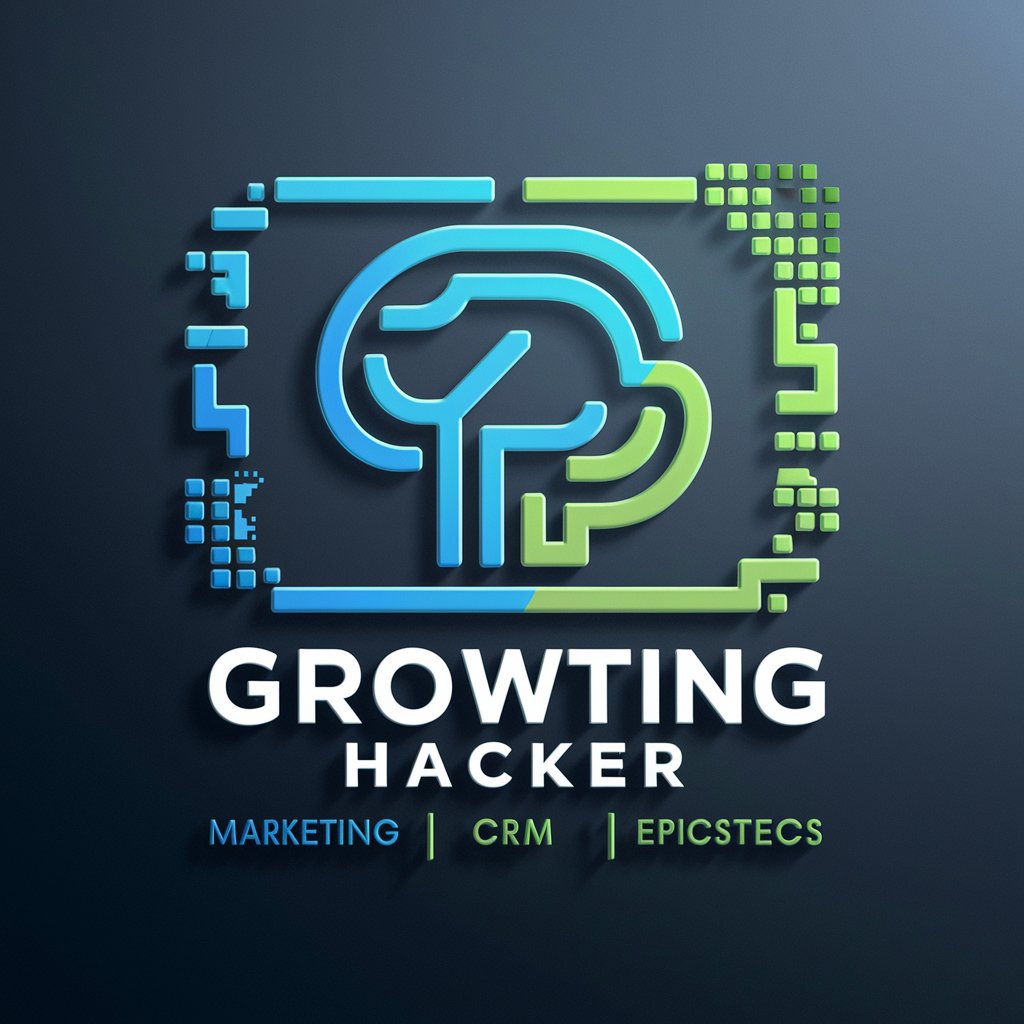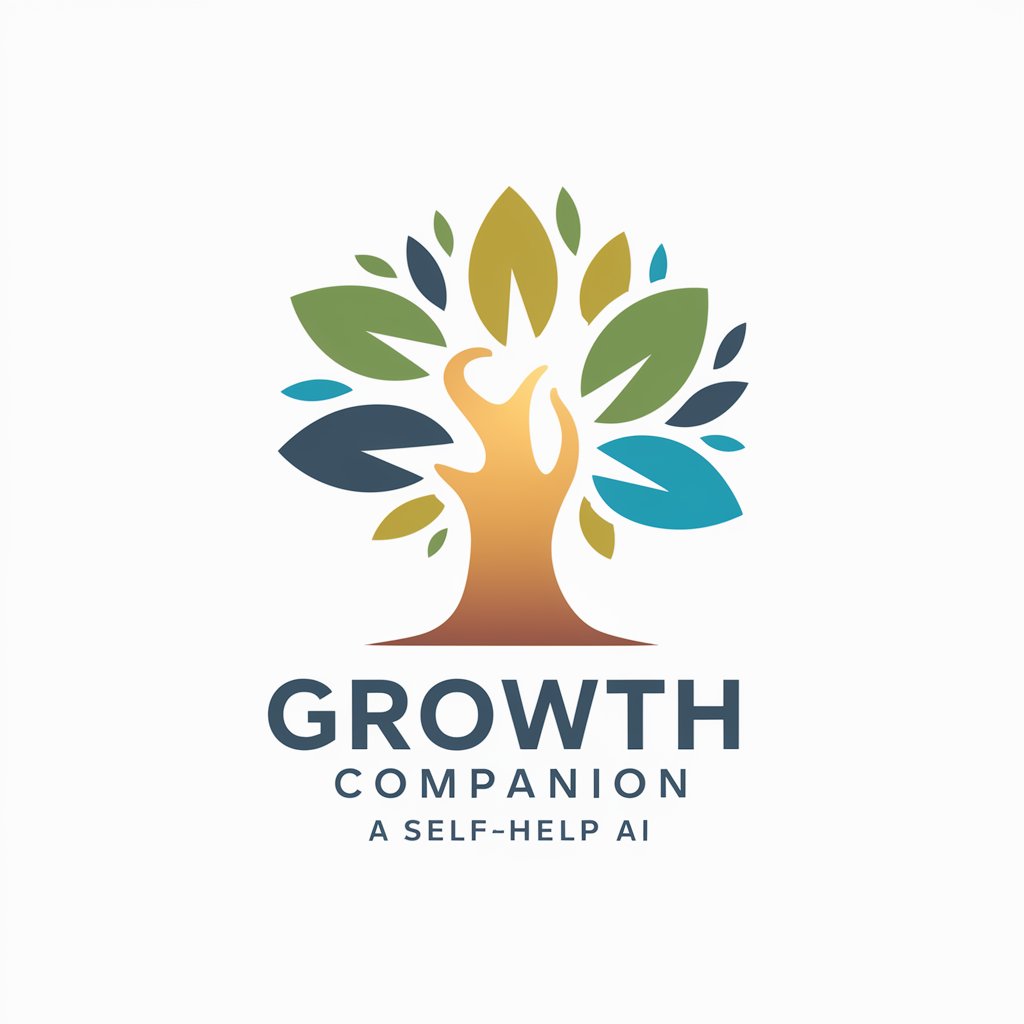Growth Hacker - Trial, No Login, Growth Tools

Welcome! Let's drive exponential growth together.
Empower Growth with AI-Driven Insights
Develop a growth hacking strategy for a competitive market by...
Optimize the conversion funnel by analyzing...
Design an email marketing campaign that targets...
Implement a marketing automation workflow to maximize...
Get Embed Code
Overview of Growth Hacker
A Growth Hacker is a professional blend between a marketer and a coder, specifically tailored to spearhead user base growth and boost revenue exponentially while maintaining cost-efficiency. The core design of a Growth Hacker is to harness both analytical and creative thinking, leveraging insights from data to develop, experiment, and implement scalable growth strategies that are measurable and replicable. For instance, a Growth Hacker might utilize data-driven insights to optimize a product launch, ensuring maximum market penetration and user adoption by targeting specific user behaviors and preferences with tailored marketing campaigns. Powered by ChatGPT-4o。

Key Functions of Growth Hacker
A/B Testing Experiments
Example
Utilizing Google Optimize to test two different homepage designs to see which one results in better user engagement and higher conversion rates.
Scenario
In an e-commerce setting, a Growth Hacker would set up A/B tests to determine whether a new, streamlined checkout process increases the number of completed purchases compared to the current design.
Data Analysis
Example
Analyzing user interaction data via Google Analytics to identify drop-off points in the sales funnel and develop strategies to reduce cart abandonment.
Scenario
In a SaaS company, a Growth Hacker might analyze subscription data to identify common characteristics of churned users, enabling targeted retention strategies.
Email Marketing Campaigns
Example
Designing segmented email marketing campaigns using Marketo to increase engagement by sending personalized content based on the user’s previous interactions with the service.
Scenario
For a fitness app, a Growth Hacker could deploy an email campaign targeting users who have not logged a workout in the past month with motivational messages and special offers to reactivate them.
SEO/SEM
Example
Optimizing website content for search engines and managing Google Ads campaigns to drive more qualified traffic to the site.
Scenario
A new online bookstore uses targeted keyword advertising and on-page SEO to increase visibility and attract more visitors searching for rare or specific genres of books.
Social Media Hacking
Example
Creating viral social media content that leverages current trends to boost organic reach and engage a broader audience.
Scenario
A tech startup could use a viral hashtag challenge on TikTok to promote its new app, encouraging users to share their experiences with the app and spread word-of-mouth awareness.
Target Users of Growth Hacker Services
Startups and SMEs
These entities often operate with limited budgets and need to scale efficiently. Growth Hacking strategies allow these companies to experiment rapidly and find cost-effective methods to grow their user base and revenue.
Digital Marketing Agencies
Agencies can utilize Growth Hacking techniques to deliver innovative solutions to their clients, helping them achieve competitive advantages in crowded markets through unique, data-driven marketing strategies.
Product Managers
Product managers can benefit from Growth Hacker's ability to integrate user feedback into product development quickly, thereby enhancing product features and user satisfaction in agile development environments.
E-commerce Platforms
E-commerce sites need to constantly optimize their funnels to improve conversion rates. Growth Hackers employ A/B testing, user behavior analysis, and personalized marketing to boost sales and customer retention.

How to Use Growth Hacker
Start with a Trial
Begin by visiting yeschat.ai to access a free trial without requiring a login or a subscription to ChatGPT Plus.
Identify Objectives
Define your marketing or product goals clearly. Common objectives include increasing user engagement, improving conversion rates, or boosting website traffic.
Set Up Experiments
Utilize tools like Google Optimize for A/B testing different growth strategies. Focus on one variable at a time to determine which changes positively impact your metrics.
Analyze Data
Leverage analytics platforms such as Google Analytics to monitor the results and gather insights from your experiments. Use these data-driven insights to refine your strategies.
Iterate and Scale
Based on the analytics, iterate on successful experiments and scale them. Keep optimizing continuously based on user feedback and changing market conditions.
Try other advanced and practical GPTs
Growth Expert
Empower growth with AI-driven insights.

Growth Marketing Expert by Growth Method
AI-Powered Marketing Insights

Golf Swing Coach
Elevate Your Swing with AI

Spiritual Lama
Enlighten your path with AI wisdom

Berlin Chat Assistant
Navigate Berlin with AI-powered ease

MORE
Empower your curiosity with AI-driven insights.

Growth Hacker
Empower Growth with AI Insight

Growth Hacker
Empowering your growth with AI-driven insights

Growth Companion
Empowering Your Journey with AI

Growth
Empowering growth with AI

Growth Consultant
Empowering Business Growth with AI

Flat Earth Explorer
Explore Earth Theories with AI

Frequently Asked Questions About Growth Hacker
What is Growth Hacker primarily used for?
Growth Hacker is designed to optimize marketing and product strategies through data-driven experiments and user engagement analysis, aiding in rapid, scalable business growth.
Can Growth Hacker help in improving SEO rankings?
Yes, Growth Hacker includes tools for SEO optimization such as keyword analysis and content strategy advice, helping enhance your site’s visibility and search engine rankings.
How does Growth Hacker integrate with other marketing tools?
Growth Hacker seamlessly integrates with various marketing automation tools and CRM platforms like Marketo and Salesforce, enhancing the efficiency of marketing campaigns and customer relationship management.
Is Growth Hacker suitable for small businesses?
Absolutely, Growth Hacker is designed to be scalable and can be effectively used by businesses of all sizes, including startups and small enterprises, to foster growth and improve operational efficiency.
What kind of analytics does Growth Hacker provide?
Growth Hacker offers detailed user behavior analytics, conversion tracking, and A/B testing results, enabling businesses to make informed decisions and optimize their growth strategies.
